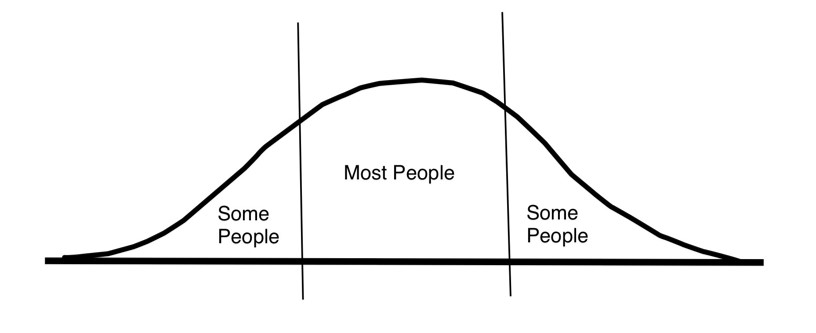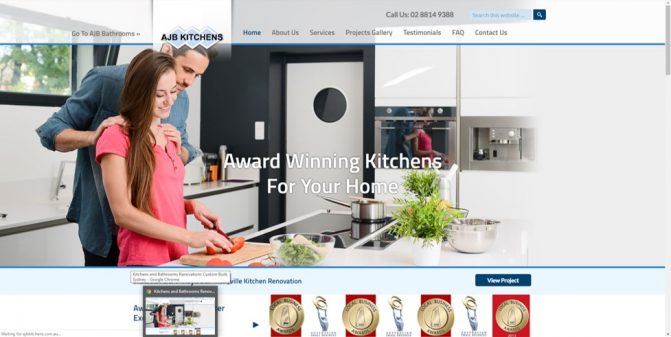There are 4 distinct stages of business growth. Knowing where your business is right now, and the ‘key insights’ of each stage will empower you to accelerate your business’ growth easier and faster.
There are also certain skills, that when learned as a business owner, quickly accelerate your business’ growth, or make it far more efficient and profitable.
Applying the key insights related to a stage will increase the cash reserves of your business substantially.
The 4 Stages of Business Growth
Stage 1 – Single Operator
Stage 2 – One to Three Employees
Stage 3 – Management
Stage 4 – True Business Ownership
Let’s explore each one of the stages in more depth and look at what the Key Insights are to rapidly and smoothly move your business to the next stage.
Stage 1 – Single Operator
This is where every business begins, even multi-national public corporations started with a single or couple of people with a vision of their business success.

This stage is actually the hardest to navigate through to the next stage. It’s also where the highest percentage of businesses fail.
There are some powerful and beneficial key insights to gain during this phase.
- Key Insight – Low prices are not the only way to win sales.
Look at any industry and you will find a huge variation of prices, for the same services.
Often the price range is 50% or more, from the cheapest supplying company to the most expensive, seen very commonly from accounting to trade service businesses.
That’s the evidence that people don’t make purchase decisions based on price alone.
If one business can operate successfully with numerous employees, selling at higher prices than most its obviously possible to do so.
How can you sell your services at higher prices than most competitors becomes the question. There’s obviously higher profit margins and cash in the bank advantages that comes with selling at higher prices.
The No. 1 skill that greatly benefits a business owner, to empower them to sell at higher prices than competitors is – selling techniques.
A one day selling skills training course can make a world of difference.
You need to avoid the kind of selling techniques that annoy people, or is ‘pushy‘.
Selling based on basic better communication using rapport building is the most effective, and also most enjoyable to use.
Its been proven time and time again, people buy from people they know, like, and/or trust, not nameless, faceless organisations with impersonable, unfriendly “sales people”.
Rapport building is a skill you can learn and benefit from greatly, with more sales at higher prices.
The majority of businesses sell at fairly low prices in a given industry, so it looks like this on a graph or “Skew Curve” where sale prices are shown on the horizontal line…

The small percentage of businesses selling at higher prices than competitors enjoy the biggest slice of net profit in an industry.
The Pricing Challenge
Selling at low prices, when overheads are minimal in Stage 1 when starting a business, can create major challenges a few years later.
That’s because the clients loyal to the business are used to cheap prices and stop buying from it when prices are increased as overheads do too.
You can’t really sell at prices that are too high, unless the quality of the experience from the customer doesn’t match it. If a business sells at high prices and then disappoints on service deliveries, the word will very quickly spread not to buy from that business.
People really do want to base their buying decisions on value, however they often just don’t see it, because the business can’t demonstrate quality and peace of mind for potential purchasers.
When value isn’t demonstrated, customers aren’t 100% confident with their buying decision, and see no reason for paying more than other businesses service offerings, so they go with the cheaper option.
It’s solely the responsibility of the business to demonstrate its quality of service, not for the customer to try to find it.
If you take on that responsibility, by investing in selling and marketing skills education, you can benefit enormously by selling above the industry average prices and increase net profit margins and cash in the bank substantially – often by $90,000 to $500,000 or more.
How to Sell on Value Versus Price
During my 34 years of building my own six successful service businesses and training thousands of others, its become obvious that the prices people will pay for a service in an industry look like this Bell Curve.

The vertical line is the volume of people, and the horizontal line is the price for a specific service being provided in an industry.
What the graph represents is that about 10% of all customers ‘Some People’ will pay the cheapest price – and obtain the standard 3 quotes before making a decision to buy.
They believe “paying more than the cheapest is unnecessary and a risk“.
10% of buyers or ‘Some People’ have an eye for high quality.
They look until they find websites that reflect a potential quality business and service experience, phone them and assess the value for money of the service during the ‘quote’ stage.
These customers firmly believe “anything cheap is a risk and not worth paying for“.
Then there are about 80% of buyers or ‘Most People’ in the middle can be persuaded to buy on value, if the business has a good ability to communicate the quality of what they offer.
Quality and perceived value is communicated with marketing (it starts with the website), phone answering techniques (e.g. words and friendliness), marketing collateral (e.g. brochures), level of integrity (e.g. turning up on time to quote), paperwork supplied (quote form layout, inclusions etc.) with the price to name a few ingredients.
The value seeking customers (90% of all buyers) almost intuitively or subliminally recognise quality and value for money and happily pay more for services.
The key insight here is to understand people base their decisions to buy on value, not price alone and to learn the skills to sell on value.
Stage 2 – One to Three Employee Businesses
Growing a business from Stage 1 to Stage 2 requires more leads, sales and customers.

Understanding how to generate the leads necessary to increase sales and employees is the challenge at this stage.
- Key Insight – Identifying quality lead generation service providers
Most businesses have a website however a lot of those websites are poorly optimized for both people visiting it and for Google (indexing and ranking).
Most website developers are far more experienced with programming, than marketing insights that are proven with facts and dozens of test results.
Knowing what to measure with all your marketing is extremely rewarding because then you understand the difference in marketing service providers.
For example, did your website developer include the most popular type of image there is for visitors, proven over decades to be one of happy people?
Here’s an example of a client’s website homepage image, chosen by their website developer based upon the business owners’ request…

Few websites feature this kind of image as the first one seen by a visitor, yet the evidence is overwhelming, its the best image choice there is to make your business more personable and visitor friendly.
Bounce Rates and View Times of website visitors are two stats that are essential to understand and look at every month.
As websites go out of style over years, it can be seen in the Bounce Rate as people don’t feel as comfortable on the site. This can also be seen in View Time or how long they stay on each page of your site.
The Load Time of each page of your website is essential to know and monitor too, as per this Google test site will show you.
Also the Response Rate of the number of new and unique visitors to phone call or web form completion is super important too.
If you didn’t know – 2% is considered “good”.
What’s your website’s percentage?
It’s a very important figure to know because if people visit your site and only a tiny percentage contact your business, you’re seriously missing out on leads and sales.
Everyday website developers are not marketing experts. They are more focused on programming expertise, so your success is strongly influenced by your own understanding of the basics of marketing that benefit your business.
Using Google Adwords?
Google Adwords is another example where a lack of understanding by business owners can have them spending thousands of dollars with poor results.
The Quality Score of all landing pages is essential to see and understand with Adwords. The Quality Score directly effects how much you pay per click and you could easily pay 200% to 400% more than you should, when Quality Scores are low due to not paying attention to this critical KPI.
By learning more about marketing yourself you can then identify better quality marketing service providers.
An expensive marketing service provider isn’t necessary a high quality one, nor is a cheap one.
Price is rarely an indicator of a quality of service.
An extra couple of thousand dollar put into using a better quality website developer can increase sales by $50,000 to $200,000 per year.
How do you know you are have a quality website developer?
With a marketing education you will know for certain and instruct your chosen website developer on essential ingredients for your business.
As more and more sales come in its time to hire people to keep up to the demand.
Initially the extra work/sales may be catered to by using a casual or part-time employee, or subcontractor – before hiring a full time employee.
Subcontractors can be a good choice however profit margins are reduced, as you are paying more for them than you would an employee. Plus its harder to control the quality of the work and customer service with subcontractors.
The focus of stage 2 is to generate more sales to reach Stage 3.
Learning the facts about your marketing service providers and your own effort is the key to growing your business faster, to get you to Stage 3.
When you’re tracking your marketing KPIs and see the facts about strategies you’re implementing yourself or through contractors, it can take the worry out of selling at higher prices.
The fear of losing sales by raising prices is often present so being in control of your leads and sales overcomes that fear, so you can raise prices as overheads increase.
That’s very important to understand by experience to the Management stage.
Stage 3 – Management
This stage is where your business has at least 3 ‘technical’ employees and have a full time admin person or two employed with in an office premises.

This stage now is about taking yourself “off the tools” where you are an ‘income generator’ using your time to fulfill a service.
Its about leverage of your time.
This phase is about that transition of going from ‘self-employed’ to a business manager.
Grab a free copy of LEVERAGE, it contains details on the very different skills required to successfully step out of being the ‘technician’ and moving more into management.
There are a few key insights to understand with Stage 3.
- Key Insight – Attitude identifying skills of potential employees
- Key Insight – Understanding margins, ratios and financial reports
- Key Insight – How to create systems employees use
- Key Insight – KPIs for each employee
Management of a business requires days of time in the week, not just minutes or hours.
Management is the role concerned with growing the business, whereas others roles are about keeping the business operating at the same revenue.
Management is about research, learning, and implementing strategies that effectively grow the business with a net profit or revenue increase.
Growing your business means increasing leads, sales conversion rates, hiring more employees, building systems, increasing prices and net profit margins etc.
This is one role you can’t really learn prior to owning a business, unless you were a general manager who has had an in-depth practical education.
Owning and growing a business is the most challenging role you can take on in the world. Its why so many businesses fail; because if business was easy 90% of business owners wouldn’t turn up for work at all. Their business would operate smoothly and profitably – without them needed to be there.
That outcome is actually achievable, for any business owner, if they are ‘open’ to learning management, which is possibly the least understood role or least underdeveloped role in a small business.
“The key skills of management are; people, numbers and systems”
These are the 3 primary skills that McDonalds refined over decades, thanks to Ray Crock the franchisor who built the McDonalds empire.
Dedicate 8 to 12 months to learning and mastering these 3 skill, and your whole world will change.
Your business will see a jump in leads, a jump in sales at higher prices, loads more cash in the bank, and your personal life as a business owner will radically improve.
You’ll feel a dramatic reduction in stress, and you’ll pay yourself more. You’ll be able to take 3 month holidays anytime during the year, not just at Christmas, and only work a 4 or 3 day week every week – if that’s what you want.
8 to 12 months isn’t a lot of time out of your life to dedicate to learning is it?
How many more years do you still intend to own your business?
If you are open to practical, learning of management skills, on all aspects of business management to enjoy rapid business success, perhaps you’re suited to the Business Freedom Mentoring Program. It won’t cost you anything to find out if your business is ready and suited to it.
Explore every opportunity for success in business
This is the key to moving to the stage 4, because only by being open minded can ideas and dreams enter your mind.
Stage 4 – Business Ownership
When your business is at this stage, it means you’ve ‘arrived’.
This is where working the hours you want is completely optional.

Your focus here is on choosing a good operations or general manager.
The difference is with an operations manager you are still working in the business regularly. A general manager takes over everything so you are completely redundant and you ‘head-space’ is completely free to pursue other business ventures or money making ventures.
With an operations manager you free up 20 to 30 hours of your time every week, which you can dedicate to growing your business by millions per year if that is your desire.
Which one of these appeals to you?
Chris, an electrical contracting business owner achieved the stage 4 outcome, after being stuck at stage 3 for decades, prior to attending the Academy of Business Mastery.
If he learned the skills of management and achieved stage 4 through education, could you too?
Here’s Chris’ story…

